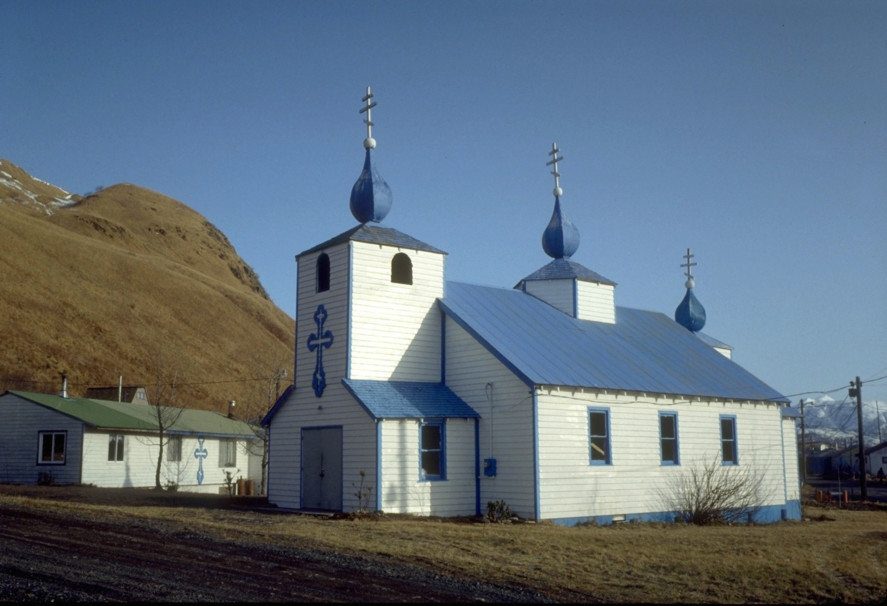Twice a year, Alaskans celebrate two holidays, Seward’s Day and Alaska Day, that mark the state’s unique entry into American history, while simultaneously recognizing Alaska’s departure from Russia’s hold. Seward’s Day lands on the last Monday of March and commemorates the purchase agreement signing for Alaska between the United States and Russia which was brokered on March 30, 1867, by then-Secretary of State William Seward. Alaska Day, celebrated on October 18th, marks the formal transfer of Alaska from Russia to America, occurring later in 1867.
Russian History and Traditions Thriving Today in Alaska
More than 150 years later, Americans may muse that Russia might look back on the sale of Alaska to the U.S. with a slight sting of seller’s remorse, but perhaps as consolation, the culture and tradition of Russian influence remain entrenched in Alaska today. In fact, you can still find Russia history and culture thriving in every region of the state.
Alaska’s Russian History
Russia’s early expansion of Alaska and subsequent colonization ramped up in the early 1700s, spearheaded by a Danish explorer named Vitus Bering. Joining the Imperial Russian Navy under Tsar Peter I (Peter the Great), Bering led bold expeditions across the treacherous Northern Pacific to investigate the mysterious North American continent, and to determine if Russia was connected to it or not. He found they weren’t, as well as fur prospects. His travels took him to the Alaska Peninsula after crossing often-brutal conditions in areas that now bear his name, such as the Bering Strait and Bering Sea, and out along the Aleutian Islands, where he was eventually buried on what is now Bering Island. North America’s largest glacier is named after him, too, set in Alaska’s Wrangell-St. Elias National Park area, far inland from the waterways he voyaged. Some came before, many arrived after, but Bering is the best-known pioneer of Russia’s Alaska advancement.
Alaska Destinations with a Russian Heritage
The names of numerous Alaskan communities derive from Russian roots (Unalaska, Kasilof, Ninilchik, Nikiski, Seldovia, Baranof Island, and Russian Mission, of course), the names of some natural resources (Mt. Redoubt, for one), and even some Alaskan surnames have Russian lineages.
Kodiak Island was one of the earliest Russian settlements and became a commercial hub. It still has the Russian look and traditions persist around the island, including honoring America’s first Russian Orthodox saint, Saint Herman of Alaska, at the Holy Resurrection Cathedral shrine and at a theological seminary which holds his name.

Russian church on Kodiak Island, Alaska
The faraway Southeast Alaska port town of Sitka has surprising and significant Russia connections. It was once the Russian-Alaska capital named Novo-Arkhangelsk (translated: New Archangel) even though it is closer to Los Angeles than Moscow. The Battle of Sitka was the last major armed conflict between Russians and the Alaska Native people of the region, and in the middle of pretty downtown Sitka sits Castle Hill, where Russia formally handed Alaska to the United States in 1867.
Sitka is still home to St. Michael’s Cathedral, a beautiful Russian Orthodox Church built in 1948; the Russian Bishop’s House museum; the Russian-American Building, once a glorified business headquarters that is now a National Historic Landmark; and the Old Sitka Site a few miles from today’s Sitka proper, once buzzing with Russian business and day-to-day life, now a ghost town on the list of National Register of Historic Places.
An entire Alaska community is home to a group of formerly nomadic Russian Old Believers. This group arrived in 1968 after a split from the Russian Orthodox Church led to journeys around the world. They eventually settled in a quiet corner of the Kenai Peninsula, where Russian heritage is still evident in many ways. They named their village Nikolaevsk. Around 200 ethnic Russian people and Old Believers still reside there and their collective tale is so fascinating that they’ve been spotlighted in state, national and international media. Today, community members balance traditional Russian Orthodox beliefs and Russian ways of life as modern Alaska and American life creep in.
Russian Cuisine – Culture and Community
Modern Alaskans also enjoy traditional ethnic Russian cuisine including piroshkies and dumplings, and participating in fun Russian cultural festivals which continue to take place annually in many Alaskan communities. The University of Alaska branches are known to have more Russian students than any other American college. Even direct flights connecting Russia to the Alaska communities of Anchorage and Nome occasionally pop up. And Russian Orthodox Christmas is a tradition carried on all around Alaska, with a large Russian Orthodox Christmas event held every year on the campus of Anchorage’s sprawling Alaska Native Medical Center.
Artifacts of Russian history, culture and stories are on display in community centers and museums, large and small, across Alaska. A surprising number of Alaskan towns also feature classic Russian architecture, with as many as 80 picturesque Russian Orthodox churches sprinkled throughout the state. Some of these churches still host regular services of worship and many embody the distinct look of a Russian church from the outside while showcasing the ornate details of Russian Orthodox religion, on the inside.

Ninilchik (with volcano in the background) on the Kenai Peninsula, Alaska
But… Can You Really See Russia From Alaska?
Finally, let’s address the infamous statement that you can see Russia from Alaska. Well, it’s technically true! Less than three miles of chilling Bering Strait waters separate Alaska’s Little Diomede Island and Russia’s Big Diomede Island, both named in tribute of Russia’s St. Diomede and plainly visible to one another. On the mainland, Alaska’s Seward Peninsula and Russia’s Chukotka Peninsula are 55ish miles apart, though some say if you climb high enough in Wales, Alaska, and if the horizon is clear enough, you can indeed spot Siberia.
